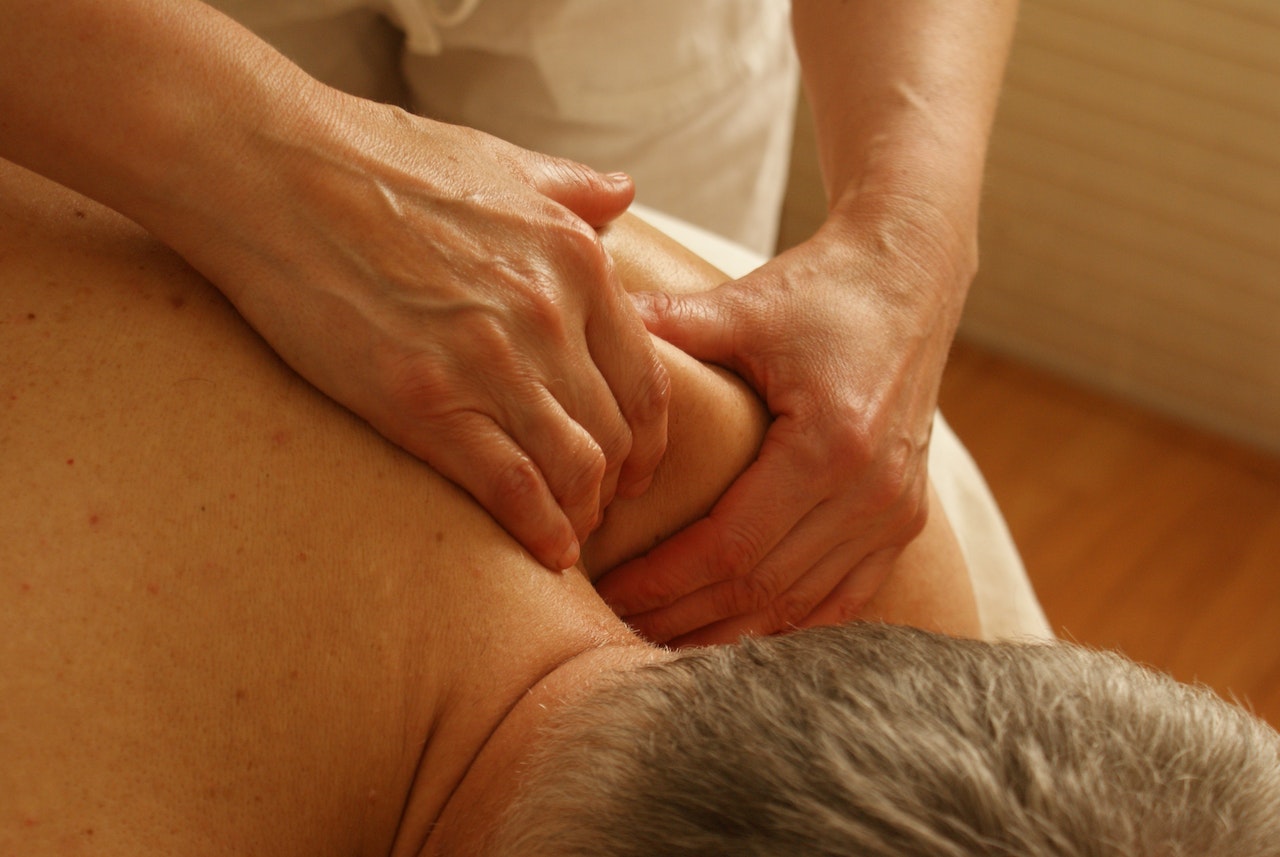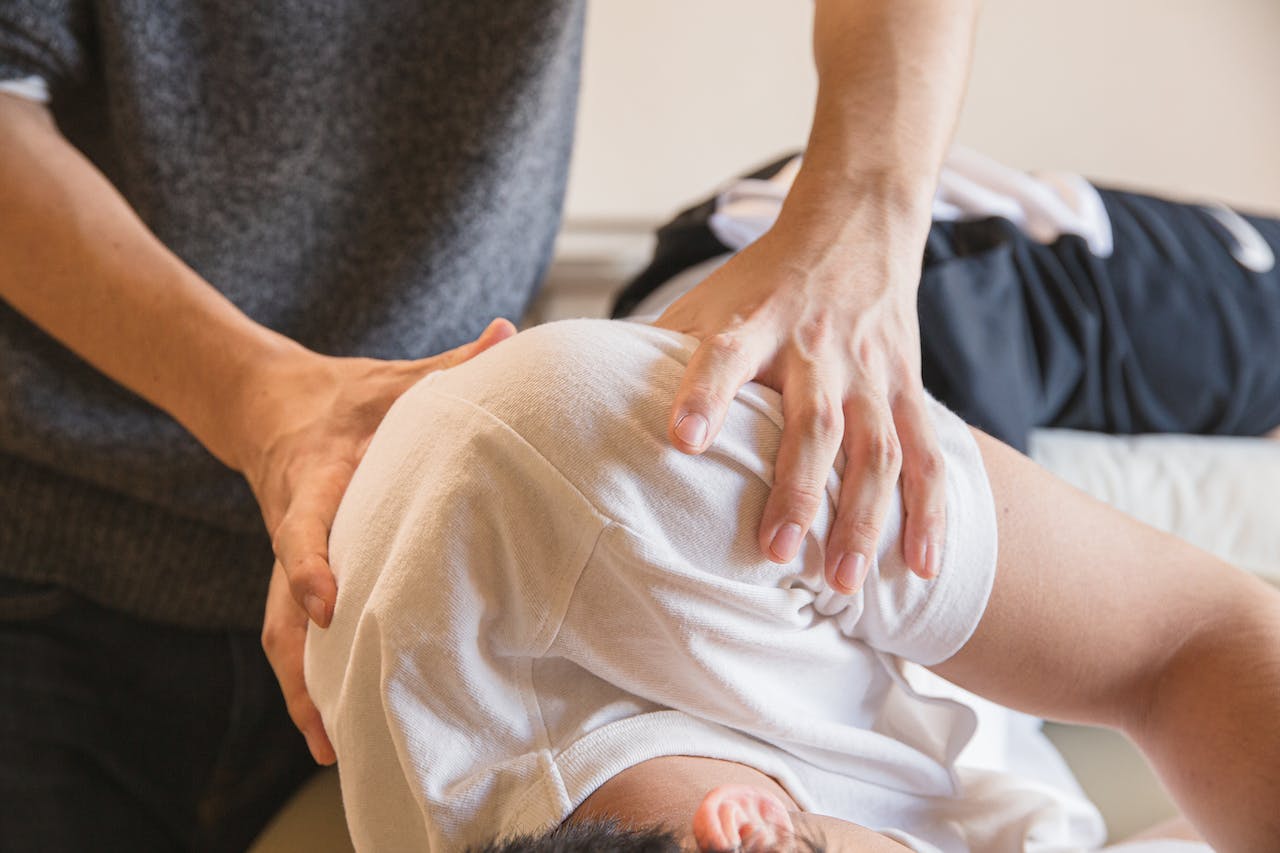Consider incorporating Structural Integration into your scoliosis treatment plan for five compelling reasons. Structural Integration, a form of bodywork focusing on realigning and balancing the body through deep tissue manipulation, offers unique benefits for individuals managing scoliosis. From improving posture and reducing pain to enhancing flexibility and promoting overall well-being, Structural Integration can be a valuable addition to your treatment regimen. By addressing both physical misalignments and underlying patterns of tension, Structural Integration aims to support long-term relief and increased mobility for scoliosis patients. Discover how this holistic approach may complement your current treatment strategies and contribute to a more comfortable and active lifestyle.
Understanding Structural Integration
Structural Integration, a type of soft tissue manipulation, targets movement patterns and posture to address scoliosis effectively. By working with Rolfers, individuals can experience structural changes through deep tissue techniques. This process enhances body awareness and provides movement education for long-lasting benefits.
Structural Integration not only focuses on physical adjustments but also improves breathing, walking, and overall quality of life for those with scoliosis. It promotes a sense of well-being by integrating a holistic approach that empowers individuals with knowledge and tools for maintaining good posture and healthy movement habits.
Basics explained
- Structural Integration involves soft tissue manipulation to enhance movement patterns and posture.
- Rolfers aim to create structural changes through deep tissue work.
- The practice focuses on improving body awareness and educating individuals on better movement habits.
Benefits Overview
- Structural Integration offers overall improvement in scoliosis treatment outcomes.
- It enhances posture, alignment, and body awareness.
- Individuals may experience pain relief benefits from Structural Integration sessions.
Process insights
Detailing the step-by-step process of a Structural Integration session reveals the hands-on techniques used specifically for scoliosis treatment. Multiple sessions are essential for optimal results due to the gradual nature of structural changes achieved through this method.
Scoliosis and Body Alignment
Scoliosis Effects
Scoliosis, a condition characterized by sideways curvature of the spine, can result in asymmetry in the shoulders. This structural change often leads to imbalances in the entire body’s alignment. Individuals with scoliosis may experience back pain due to the misalignment affecting their posture. These effects can significantly impact daily life, causing discomfort during activities like standing, sitting, or walking.
Addressing scoliosis early is crucial to prevent further complications and improve quality of life. Proper diagnosis and treatment can help manage symptoms and reduce the progression of spinal curvature over time.
Importance of Alignment
Proper alignment plays a vital role in scoliosis treatment as it helps alleviate discomfort and improve overall well-being. Structural Integration focuses on realigning the body through soft tissue manipulation, targeting areas of tension and imbalance. By addressing these issues, rolfing aims to restore balance and symmetry in movement patterns, reducing pain associated with scoliosis.
Through movement education, individuals with scoliosis can learn techniques to enhance breathing, movement coordination, and posture. This holistic approach not only improves physical health but also enhances mental well-being by promoting body awareness and self-care practices.
Reason 1: Pain Relief
Structural Integration offers effective ways to reduce pain and discomfort linked to scoliosis. Through targeted soft tissue manipulation, it addresses specific areas of chronic back pain. By improving posture and spine alignment, rolfing helps alleviate discomfort and enhance overall health.
Specific techniques in rolfing focus on targeting discomfort areas associated with scoliosis. These methods work towards releasing tension in muscles, promoting relaxation, and reducing pain levels. Structural Integration sessions aim to bring relief by addressing the root cause of the discomfort.
Relaxation plays a crucial role in reducing scoliosis discomfort during rolfing sessions. By easing muscle tension and promoting a sense of calmness, individuals experience reduced pain levels and increased comfort. The combination of techniques used in rolfing can significantly impact the management of scoliosis-related discomfort.
Incorporating rolfing into a scoliosis treatment plan offers various long-term benefits. It leads to lasting improvements in posture, mobility, and overall well-being. Structural Integration sessions can result in enhanced body awareness, better breathing patterns, and improved support for the spine.
Structural Integration’s impact on posture can have significant long-term effects on preventing scoliosis progression. By addressing alignment issues and muscle imbalances through deep tissue manipulation, rolfing helps maintain spinal health. The long-lasting benefits of rolfing extend beyond immediate pain relief to contribute to ongoing postural improvements.
When included as part of a comprehensive treatment plan, rolfing can provide individuals with scoliosis valuable tools for managing their condition effectively. By enhancing body awareness and addressing underlying issues related to posture and muscle tension, rolfing offers a holistic approach to scoliosis care.
Reason 2: Improved Posture
When it comes to correcting imbalances, rolfing focuses on addressing muscular asymmetries commonly found in scoliosis patients. By manipulating the body’s soft tissues, rolfing aims to bring balance to the muscles surrounding the spine, helping to alleviate postural issues associated with scoliosis. Through targeted pressure and manipulation techniques, rolfing practitioners work towards realigning the body’s structure, promoting better posture and alignment.
Structural Integration plays a crucial role in enhancing mobility for individuals with scoliosis by targeting specific areas of tension that restrict movement. Through deep tissue manipulation and myofascial release techniques, rolfing helps improve overall flexibility and range of motion in scoliosis patients. By loosening tight muscles and fascia, individuals can experience increased ease of movement and reduced stiffness, contributing to enhanced mobility.
One key aspect of rolfing is its focus on structural integration to address postural imbalances commonly seen in scoliosis patients. By working on aligning the body’s structure through manual manipulation techniques, rolfing aims to create a more balanced foundation for movement. This approach not only helps in improving posture but also plays a significant role in reducing discomfort and pain associated with scoliosis.
Incorporating rolfing into a scoliosis treatment plan can lead to positive changes in how individuals move and hold themselves in gravity. By targeting specific areas of tension and restriction, rolfing sessions can facilitate structural changes within the body that promote better alignment and movement patterns. This can result in a more harmonious relationship between the individual’s body and gravity, leading to improved posture and overall comfort.
Correcting Imbalances
- Structural Integration addresses muscular imbalances by targeting specific areas of tension.
- Structural integration techniques help rebalance the body’s alignment for improved posture.
- Balancing the body through rolfing is essential for managing scoliosis effectively.
Enhancing Mobility
- Structural Integration enhances mobility by releasing restrictions in muscles and fascia.
- Specific techniques like myofascial release are used to improve the range of motion.
- Improved mobility through rolfing can help alleviate symptoms associated with scoliosis.
Reason 3: Enhanced Flexibility
t tissue manipulation in rolfing can lead to structural changes in the body, improving posture and movement patterns affected by scoliosis. This technique focuses on releasing tension in the soft tissues, allowing for better alignment of the spine and limbs.
Enhanced flexibility through rolfing can help alleviate discomfort and pain associated with scoliosis by supporting the spine in a good alignment against gravity. Individuals with scoliosis often experience restricted movement, and rolfing aims to improve this by enhancing movement patterns and reducing strain on the back.
Structural Integration can have a positive effect on soft tissues, allowing for better movement and reducing strain on the back over time. By addressing soft tissue imbalances, rolfing can enhance the sense of ease and freedom in movement for individuals with scoliosis. This improved flexibility can contribute to better overall well-being and quality of life for patients.
Increasing range of motion
Structural Integration techniques focus on releasing tension in muscles and fascia, which can significantly increase the range of motion in individuals with scoliosis. Through targeted bodywork, rolfing aims to address specific areas of tightness or restriction, promoting greater flexibility in movements.
Improved flexibility plays a crucial role in managing scoliosis as it allows individuals to move more freely without experiencing as much pain or discomfort. Structural Integration helps to lengthen muscles and improve joint mobility, enabling patients to engage in daily activities with greater ease and comfort.
Targeted bodywork sessions in rolfing are designed to enhance the range of motion by addressing muscular imbalances and restrictions caused by scoliosis. By focusing on releasing tension and restoring proper alignment, individuals can experience increased flexibility that supports their overall spinal health.
Joint health
Structural Integration has a significant impact on joint health for scoliosis patients by promoting better mobility and function within the joints. The techniques used in rolfing aim to realign the body’s structure, which can relieve pressure on joints affected by scoliosis.
Through specific manipulations and movements, rolfing helps improve joint mobility by releasing tightness and increasing flexibility around the joints. This not only reduces discomfort but also enhances overall movement capabilities for individuals dealing with scoliosis.
Maintaining healthy joints is crucial in scoliosis management as it contributes to better posture, reduced pain levels, and improved overall functionality. Structural Integration’s focus on joint health complements other treatment approaches by ensuring that individuals with scoliosis have optimal support for their musculoskeletal system.
Reason 4: Stress Reduction
Structural Integration offers soft tissue manipulation techniques that can significantly reduce stress levels in individuals with scoliosis. By targeting specific areas of tension, rolfing helps release built-up stress and promotes relaxation. Through gentle manipulation, rolfing can alleviate both physical and mental stress associated with scoliosis.
Improving breathing patterns is crucial for scoliosis patients to lessen the discomfort they experience. Structural Integration sessions focus on enhancing breathing techniques to optimize lung capacity and oxygen flow. This, in turn, aids in reducing the strain on the body caused by scoliosis and improves overall well-being.
Body awareness plays a vital role in supporting proper posture and minimizing the effects of gravity on the spine. Structural Integration enhances awareness of body alignment, helping individuals maintain better posture throughout their daily activities. By cultivating this awareness, scoliosis patients can counteract the gravitational pull on their spine more effectively.
Chronic back pain is a common issue for those with scoliosis, often stemming from postural imbalances and muscle tension. Structural Integration addresses these root causes through targeted soft tissue manipulation, providing relief from persistent back pain over time. By releasing tension and restoring balance to the body, rolfing offers a holistic approach to managing chronic pain associated with scoliosis.
Mental benefits
Structural Integration not only focuses on physical aspects but also offers significant mental benefits for scoliosis patients. The practice of rolfing can reduce stress levels by promoting relaxation and easing mental tension. Through calming touch and intentional movements, rolfing helps individuals achieve a state of deep relaxation, benefiting their mental well-being.
Highlighting the mind-body connection is essential in understanding how rolfing contributes to improved mental health for scoliosis patients. By addressing physical discomfort through soft tissue manipulation, rolfing can positively impact mental clarity and emotional well-being. This holistic approach fosters a sense of inner peace and balance for individuals navigating the challenges of living with scoliosis.
Physical relaxation
Structural Integration plays a key role in inducing physical relaxation among individuals with scoliosis. The deep tissue manipulation techniques employed during rolfing sessions help release muscle tension and promote overall relaxation. By targeting specific areas of tightness and discomfort, rolfing enables scoliosis patients to experience profound physical relief and increased comfort in their bodies.
Deep tissue manipulation is instrumental in relieving tension within muscles affected by scoliosis, allowing for greater mobility and flexibility. Through gentle yet effective pressure applied during rolfing sessions, individuals can experience a sense of ease and relaxation throughout their bodies. This physical relaxation not only enhances comfort but also supports better movement patterns for those managing scoliosis-related challenges.

Reason 5: Holistic Approach
Approaching scoliosis treatment holistically means considering the interconnectedness of the entire body. Structural Integration focuses on more than just the spine, taking into account how different areas of the body influence each other. This approach aims to bring balance and harmony to the human body as a whole.
Structural Integration can have a profound impact on your overall health by promoting a sense of awareness and balance within your body. By addressing imbalances and restrictions throughout the body, this technique helps improve posture, movement, and overall well-being. This newfound awareness can lead to a better quality of life for individuals dealing with scoliosis.
Treating scoliosis with a holistic approach through Structural Integration can result in long-lasting effects that go beyond just pain relief. By supporting your body’s natural ability to heal and function optimally, you may experience improvements in mobility, comfort, and overall physical health. This comprehensive method considers the body as a whole entity rather than focusing solely on symptoms.
Embracing Structural Integration’s holistic approach allows individuals to gain deeper knowledge and understanding of their bodies. By exploring how different parts of the body are interconnected and affect each other, patients can develop a greater appreciation for their bodies’ functions. This increased understanding empowers individuals to actively participate in their healing process and work towards achieving their treatment goals effectively.
Mind-body connection
When it comes to rolfing for scoliosis treatment, understanding the mind-body connection is crucial. Emotional well-being plays a significant role in the physical health of scoliosis patients. Addressing emotional stress and tension through Structural Integration sessions can positively impact both the mental and physical aspects of scoliosis management.
Structural Integration’s holistic approach emphasizes the importance of addressing mental and emotional factors alongside physical symptoms. By promoting relaxation, reducing stress levels, and enhancing emotional well-being, Structural Integration contributes to a more comprehensive care plan for individuals with scoliosis. This integrated approach recognizes that emotional health is closely linked to physical well-being.
Comprehensive care
Structural Integration stands out as a comprehensive approach to scoliosis treatment, encompassing both physical and emotional aspects of care. Through hands-on manipulation techniques, Rolfers work on realigning the body structurally while also addressing emotional imbalances that may contribute to musculoskeletal issues. Each session is tailored to meet the individual needs of the patient, ensuring personalized care and attention throughout the treatment process.
Comparing Treatments
When it comes to scoliosis treatment, comparing traditional methods with Structural Integration’s soft tissue manipulation approach reveals significant differences. Structural Integration focuses on addressing the root causes of pain and discomfort through targeted techniques.
Structural Integration stands out for its ability to provide long-term health benefits by improving movement patterns and posture. This contrasts with traditional treatments that often focus solely on symptom management without addressing underlying issues.
Clients undergoing Structural Integration experience a unique approach that emphasizes body awareness and alignment. This holistic method not only alleviates physical pain but also enhances overall well-being by promoting better posture and movement habits.
One of the key strengths of Structural Integration is its effectiveness in targeting specific areas of tension along the spine and sides. By honing in on these trouble spots, Structural Integration can offer precise relief that may not be achieved through conventional treatments alone.
Structural Integration vs. Traditional methods
- Structural Integration offers a more holistic approach compared to traditional scoliosis treatments.
- The personalized nature of Structural Integration sessions caters to individual needs, unlike standardized traditional methods.
- Structural Integration’s focus on body awareness and alignment sets it apart from conventional treatments for scoliosis.
Personalized treatment plans
Incorporating personalized treatment plans is crucial in the realm of Structural Integration for scoliosis management. These tailored plans ensure that each session targets the specific needs and concerns of every patient.
By customizing each session, Structural Integration practitioners can address the unique challenges faced by individuals with scoliosis. This personalized approach allows for a more comprehensive treatment strategy that goes beyond just alleviating symptoms.
Assessments play a pivotal role in creating customized Structural Integration plans. By evaluating an individual’s posture, movement patterns, and areas of discomfort, practitioners can design sessions that effectively target problem areas while promoting overall alignment and well-being.
Preparing for Structural Integration Sessions
Understanding the Structural Integration approach is crucial for individuals considering it as part of their scoliosis treatment plan. Rolfers utilize soft tissue manipulation to target specific areas affected by scoliosis-related movement patterns and posture issues. By addressing these issues, Structural Integration aims to improve overall body alignment and function.
During Structural Integration sessions, clients can expect a strong focus on movement education. This includes receiving guidance on proper walking techniques, effective breathing, and correcting faulty movement patterns contributing to scoliosis. By improving posture and enhancing movement quality, individuals can experience reduced back pain associated with scoliosis.
It’s essential to communicate any areas of discomfort such as shoulder, back, or other pain to your rolfer before the session begins. This ensures that the Rolfer can tailor the session to address these specific concerns effectively. Through targeted deep tissue work, clients can experience relief and improved mobility in these problematic areas.
Embracing a holistic experience is key when undergoing Structural Integration for scoliosis treatment. Clients are encouraged to actively participate in the sessions and follow the recommended ways to maintain good posture and alleviate pain over time. By incorporating lifestyle changes and post-session practices, individuals can enhance the long-term benefits of Structural Integration.
What to expect
- Prepare yourself for a rolfing session by understanding the process
- Anticipate sensations like pressure, stretching, and release during the session
- After rolfing, you may feel relaxed, more aligned, or experience temporary soreness
How to get started
- Begin by researching qualified rolfers in your area specializing in scoliosis treatment
- Schedule an initial consultation to discuss your goals and expectations from Structural Integration
- Establish clear objectives for your treatment plan before starting Structural Integration sessions
Success Stories
Many people have achieved their health goals through rolfing, effectively managing scoliosis-related pain and discomfort. Clients often experience significant changes in their quality of life post-rolfing sessions.
Structural Integration has positive effects on children with scoliosis, supporting their growing bodies and enhancing overall health. Practitioners’ expertise helps identify and address long-standing patterns, leading to improved posture and alignment.
Final Remarks
In conclusion, the benefits of considering Structural Integration as part of a scoliosis treatment plan are compelling. From pain relief to improved posture, enhanced flexibility, stress reduction, and a holistic approach to wellness, Structural Integration offers a comprehensive solution for individuals seeking alternative therapies. By comparing treatments and preparing for Structural Integration sessions, patients can embark on a journey toward better spinal alignment and overall well-being. Success stories attest to the positive impact of Structural Integration on scoliosis management, highlighting its potential as a valuable adjunct to traditional medical interventions.
For those exploring options beyond conventional scoliosis treatments, delving into the realm of Structural Integration could prove transformative. Embracing this holistic practice may not only alleviate physical discomfort but also enhance one’s quality of life. Consider incorporating Structural Integration into your scoliosis treatment plan and experience the potential benefits firsthand.
Frequently Asked Questions
1. What is Structural Integration and how does it help with scoliosis treatment?
Structural Integration is a hands-on therapy aimed at improving body alignment and function through deep tissue manipulation. For scoliosis, it can help by releasing tension, improving posture, and enhancing flexibility to reduce pain and discomfort associated with the condition.
2. Is Structural Integration suitable for all individuals with scoliosis?
Structural Integration can be beneficial for many individuals with scoliosis, but it’s essential to consult with a healthcare provider or a certified Rolfer to determine if it’s the right approach for your specific condition. Factors like the severity of scoliosis and individual health conditions should be considered.
3. How many Structural Integration sessions are typically needed to see results for scoliosis?
The number of Structural Integration sessions needed varies depending on factors such as the severity of scoliosis, individual response to treatment, and overall health. While some people may experience improvements after a few sessions, others may require more consistent treatment over time to see significant results.
4. Are there any potential side effects or risks associated with Structural Integration for scoliosis?
When performed by a trained and certified professional, Structural Integration is generally safe for most individuals. However, some people may experience temporary soreness or discomfort after a session due to the release of tension in muscles and tissues. It’s important to communicate any concerns with your Rolfer during the treatment.
5. Can Structural Integration be used in conjunction with other scoliosis treatments?
Yes, Structural Integration can complement other scoliosis treatments such as physical therapy or chiropractic care. Integrating multiple approaches tailored to individual needs can enhance overall outcomes for managing scoliosis symptoms effectively. Coordination between different healthcare providers is crucial for a comprehensive treatment plan.
Elevating Scoliosis Management with Structural Integration: Achieve Structural Balance with MedicinEvolution’s Revolutionary Approach!
Are you or someone you know navigating the complexities of scoliosis, seeking relief from pain, or aspiring to improve posture and body alignment? MedicinEvolution stands at the forefront of integrating Structural Integration into scoliosis management and structural integration, offering individuals a path to optimal health and bodily harmony. By employing the transformative techniques of Structural Integration, MedicinEvolution directly addresses the underlying imbalances caused by scoliosis, initiating a holistic healing process. Bid adieu to the discomforts of scoliosis, including chronic pain and the uneven stresses on your body—as MedicinEvolution customizes its approach to meet your body’s specific needs, guiding you towards significant relief and structural correction. Their personalized Structural Integration sessions are crafted to guide you beyond the pain and restrictions scoliosis brings, unlocking your body’s true potential.
If scoliosis has been a source of persistent pain, discomfort, or has limited your movement and quality of life, MedicinEvolution’s innovative strategy, combining Structural Integration with advanced techniques for scoliosis care, is precisely what you need. Don’t allow scoliosis to set the limits of your physical well-being—take the step and schedule your consultation with MedicinEvolution now! Embark on a journey with their Structural Integration-centered treatments and begin moving towards a more balanced, pain-free, and optimally aligned life. Your body, now liberated from the challenges of scoliosis, will celebrate the extraordinary transformation!





